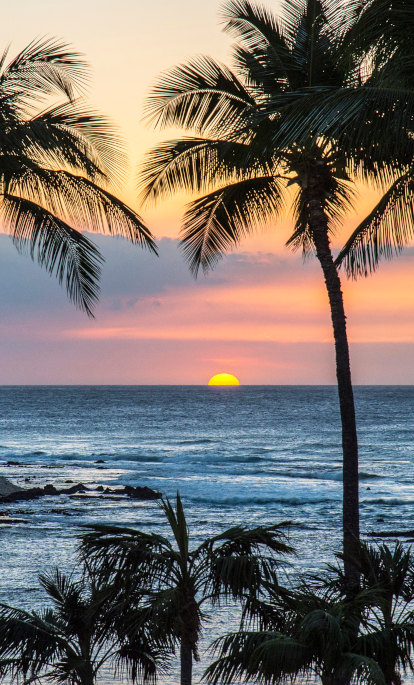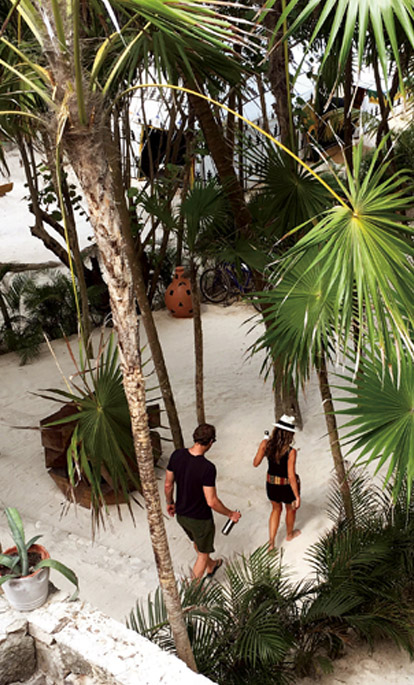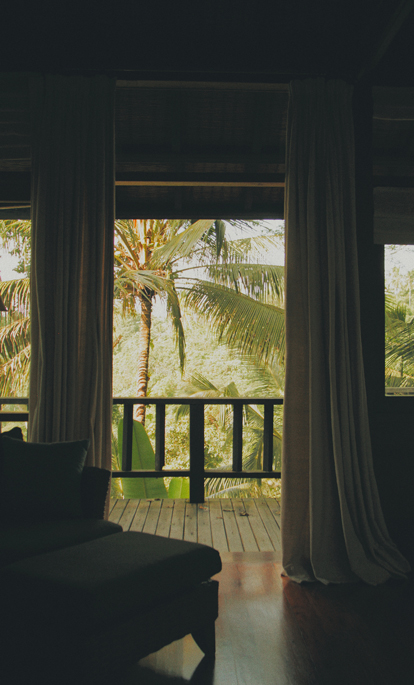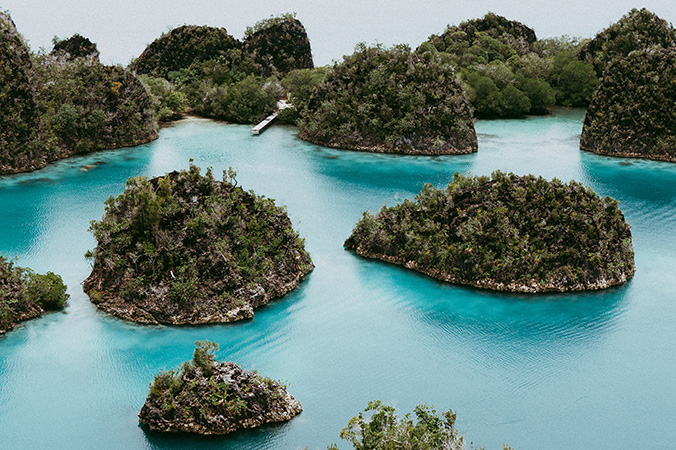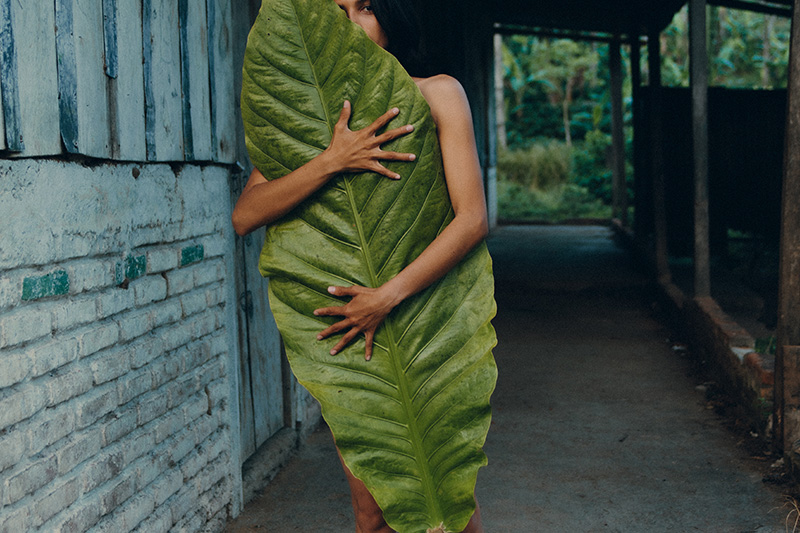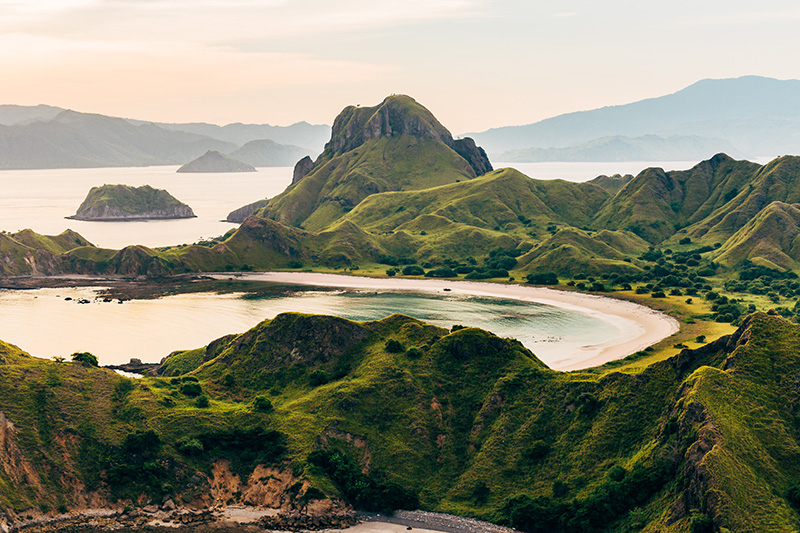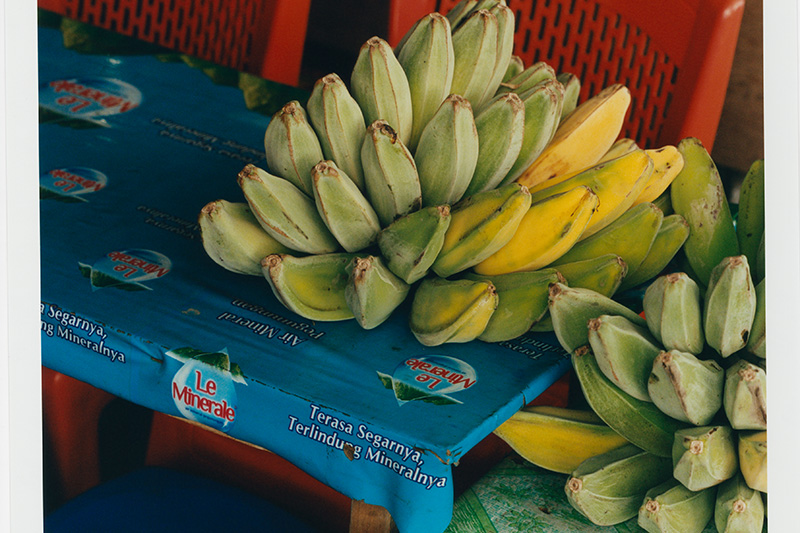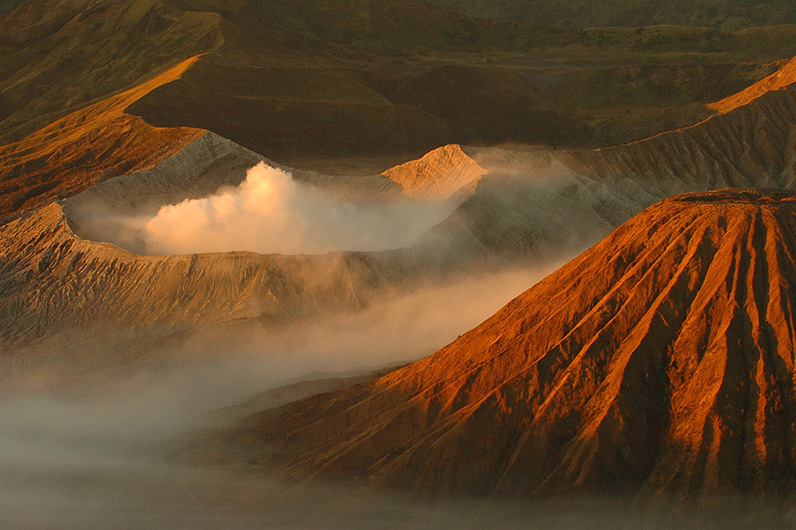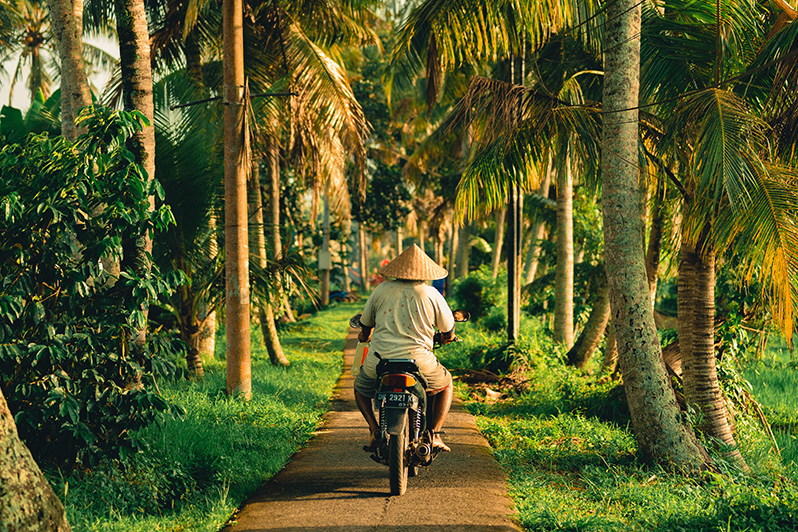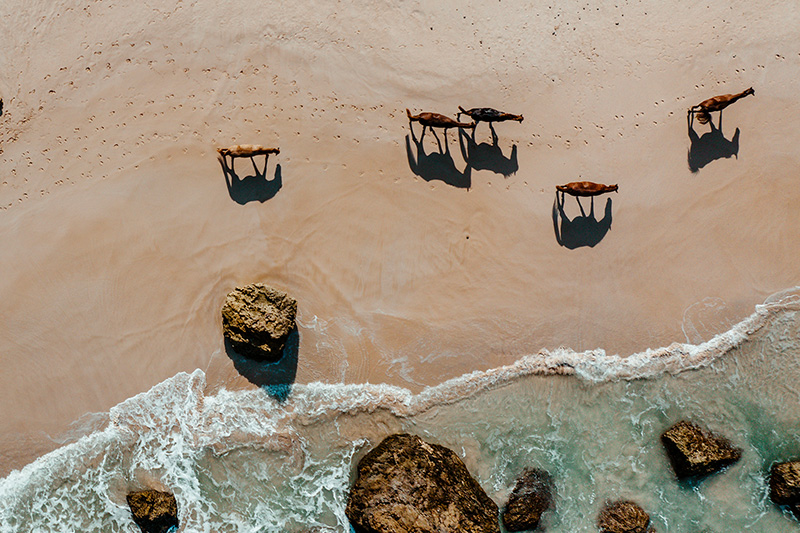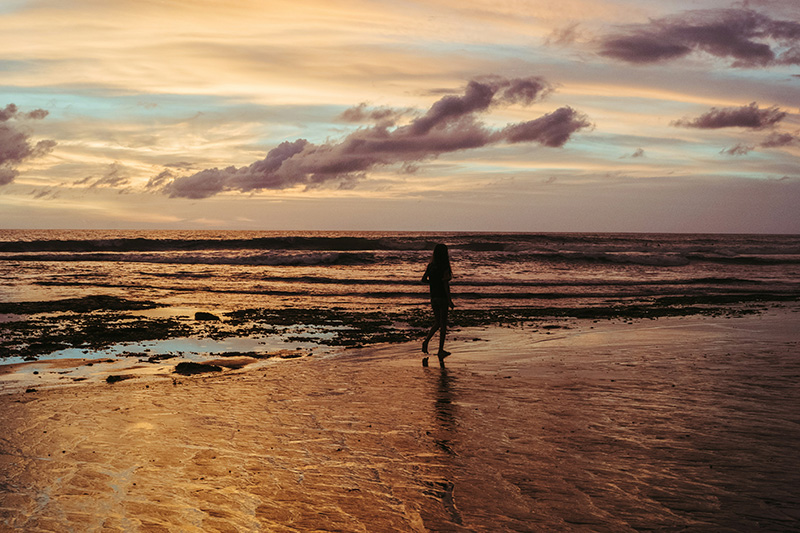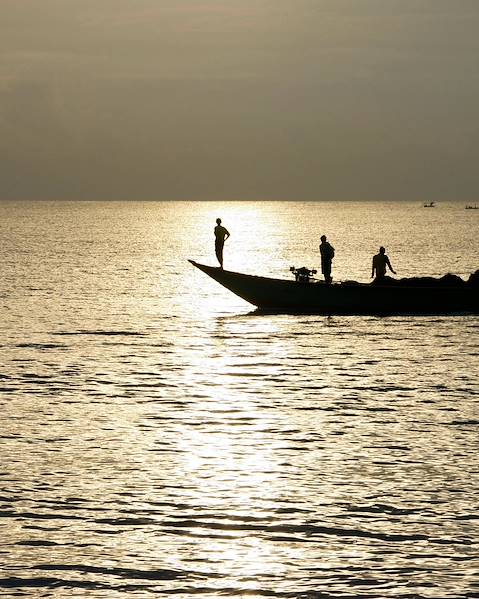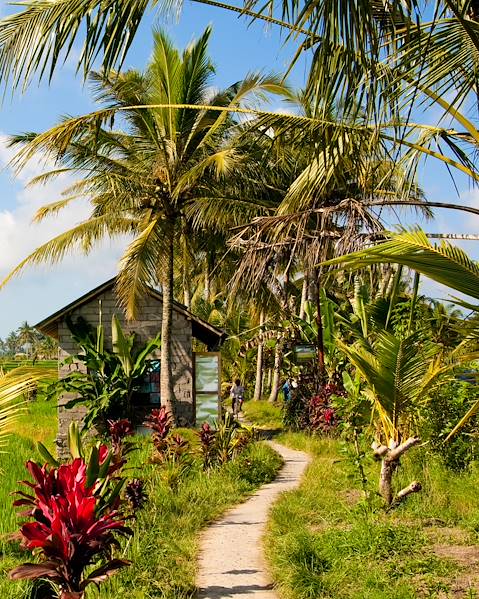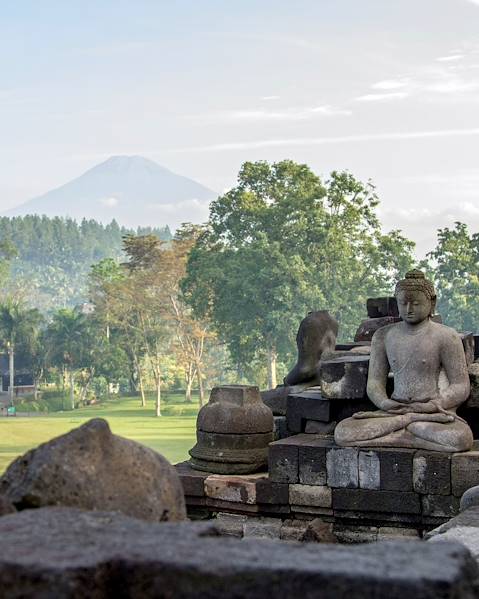With its volcanic terrain, misty mountain peaks and myriad marine species, it’s no wonder visitors flock to Indonesia year-round. Intersected by the equator, the archipelago experiences a tropical climate that remains warm throughout the year so when it comes to deciding the best time to visit Indonesia, it depends on what activities spark your interest. For divers, the ideal months are May and June, which mark the start of the dry season. However, Raja Ampat (a mecca for divers) has a distinct climate, attracting snorkellers during its dry season from October to April. If you’re eager to spot elusive orangutans, visit Kalimantan (Borneo) or the northern Sumatran jungle in April to avoid the rainy season from November to March. Read on for our month-by-month overview of Indonesia’s climate...
Bali
Bali's dry season is from April to October, when the weather is warm and there are blue skies and cool winds. There’s also less humidity, making it the perfect time to hike, bike, surf and more. Coinciding with our school summer holidays, July and August are also a popular time to visit Bali, especially as the maximum average temperature is close to 31°C. The periods from April to June, or even from October to November, are also considered the best time to visit Indonesia, as sunshine levels are high and it’s before arrival of the significant rainy season. At these times, the maximum average temperature will also be 31°C. The monsoon season in Bali, showering the island from November to February, sees fairly heavy rainfall, but for relatively short periods. Unlike Vietnam, which is not far away, Bali's rainy season doesn't mean continuous rainfall.
Sulawesi
Sulawesi (also known as Celebes) has a climate that varies depending on the latitude. In the north, the climate is equatorial, while in the south it is tropical and humid. The maximum average temperature on Sulawesi ranges from 30° to 32°C throughout the year, while the minimum average range is between 23° and 24°C. The dry season (July to October) is much more pronounced on the north side of the island, while the monsoon season runs from November to June. However, it's worth noting that on the north side and the central part of the island, there is a fairly even spread of rainfall throughout the year. To the south of the island, the dry season is more extensive, from May to October, while the monsoon season is concentrated from November to April. The southern part, and especially the south-eastern peninsula, is the driest part of the island. The best time to go to Sulawesi depends on the holidayer, and the type of climate, weather and potential rainy season you would be comfortable experiencing.
Java
Java has a hot and humid equatorial climate. This type of climate delivers year-round temperatures of between 25°C and 32°C. The climate is softened slightly by the proximity of the Java Sea and Indian Ocean. The dry season in Java runs from April to October, while the rainy season is from November to March. The wettest part of Java is to the west. Elsewhere in Java, rains can sometimes turn into thunderstorms, but they don’t last for long, and the rainfall is generally concentrated in the mid to late afternoon.
Lombok
Lombok's climate is quite similar to that of Bali. However, the weather is drier here, with temperatures ranging from 25°C in the dry season to more than 32°C in the middle of the rainy season. Unsurprisingly, there is a cooler climate in Lombok's mountainous regions, with the maximum average temperature ranging between 20° and 25°C. Similar to other parts of Indonesia, Lombok's dry season runs from March to October, while the monsoon season lasts from November to April. December and February are the wettest months of the year in Lombok, but the rain can even put in an appearance in the dry season, especially in the western part of Lombok.
Sumatra
In Indonesia, the island of Sumatra experiences significant rainfall, with both the rain and heat a constant throughout the year. The island of Sumatra has a tropical climate, with enjoyable weather conditions for the most part. Like in most other parts of Indonesia, there are identifiable seasons. First up is the dry season, running from May to September, with only occasional rainfall, while the remainder of the year (April to October), offers a far more humid climate in comparison. The winter months see high levels of rainfall again. Interestingly though, the humidity levels on the island of Sumatra never drop below 80% in any season, making it a warm and inviting location throughout the year.


